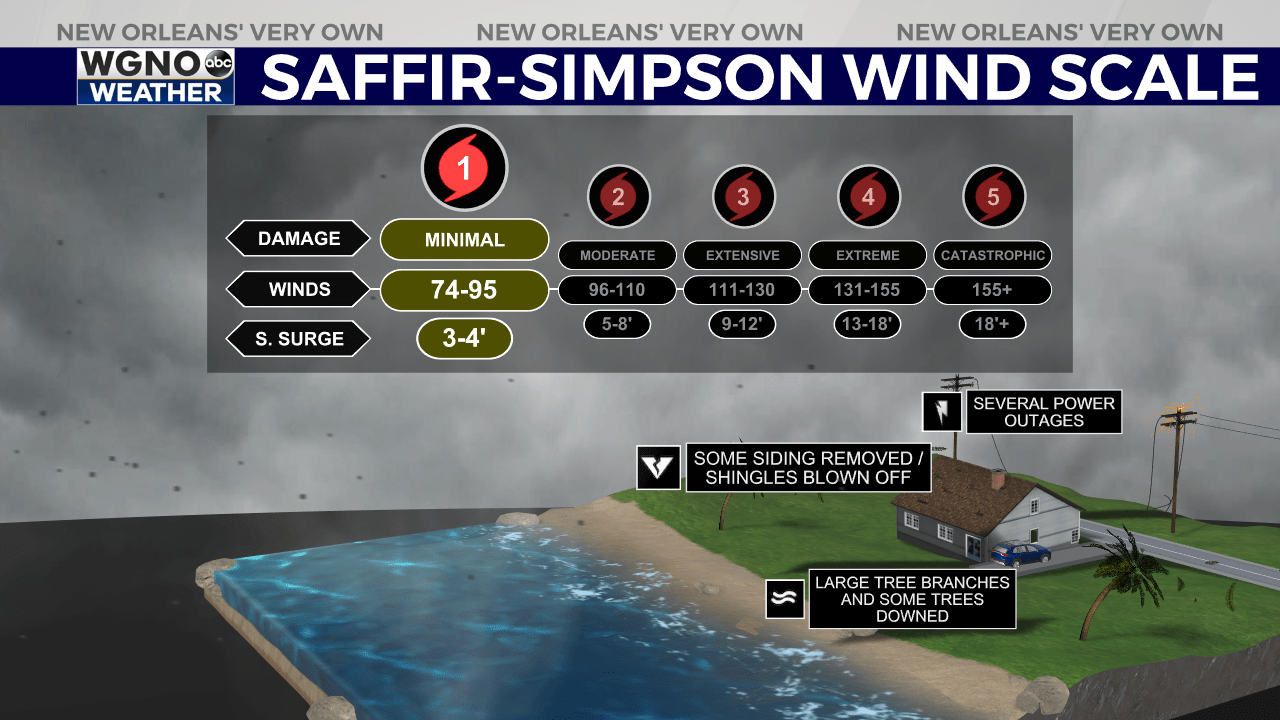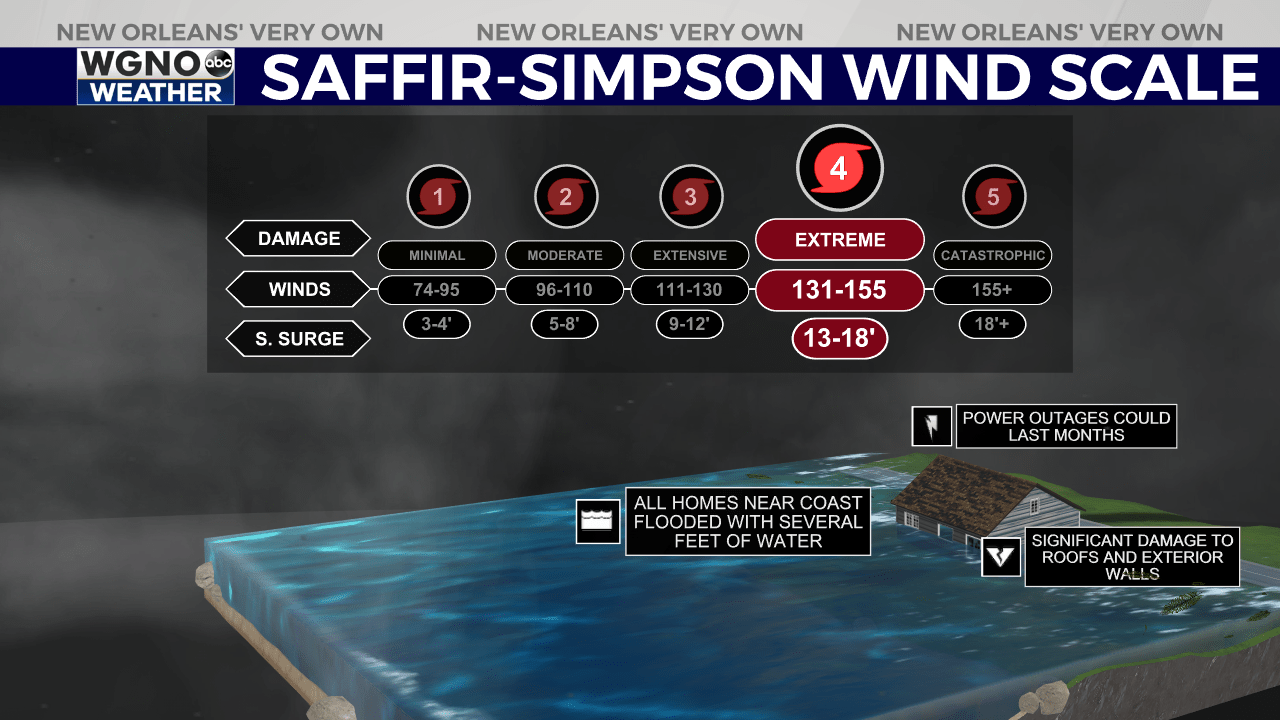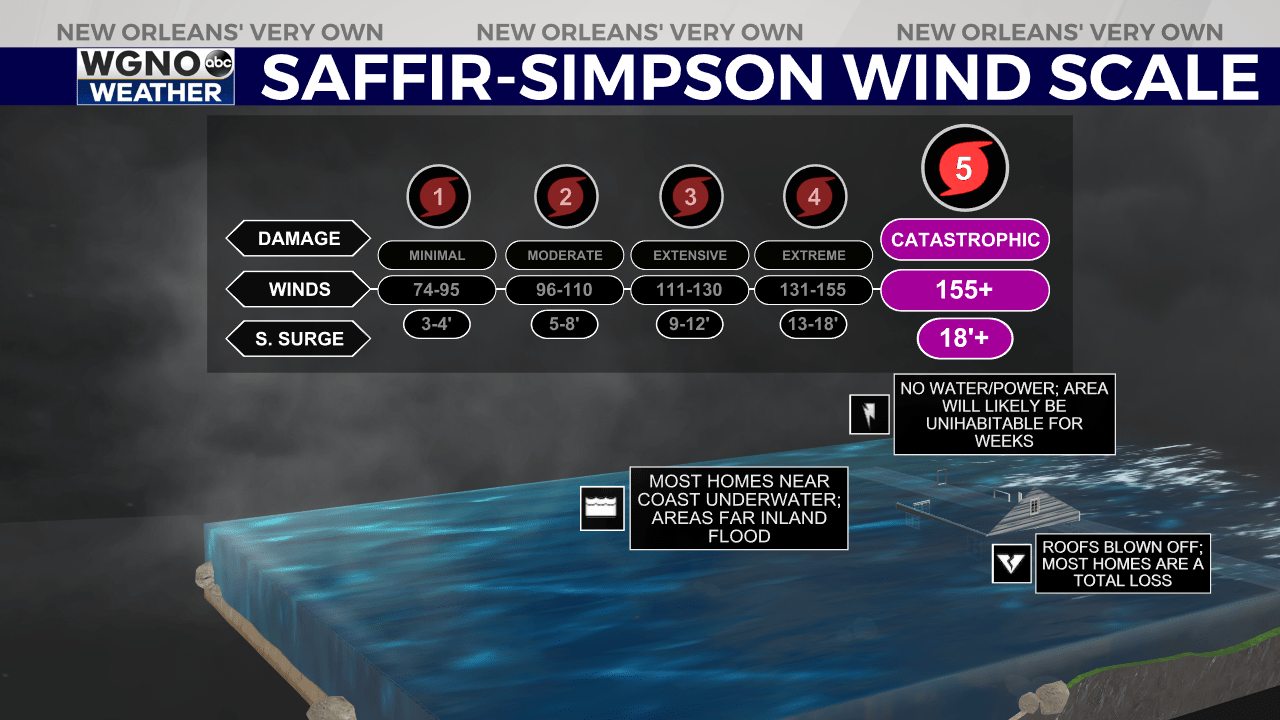NEW ORLEANS (WGNO) — NOAA forecasters are predicting an above-normal Atlantic hurricane season in 2024, saying there’s an 85% chance it will be more active than usual.
This increased activity is due to several factors: near-record warm sea surface temperatures in the Atlantic, the development of La Niña conditions, reduced Atlantic trade winds and less wind shear, all of which help storms form and grow stronger.
Hurricanes are categorized by the Saffir-Simpson Hurricane Wind Scale. This scale classifies hurricanes into five categories based on their sustained wind speeds, with each category representing a different level of potential damage and danger.
Here’s a closer look at how hurricanes in each category can affect communities.
Category 1 (74-95 mph):
Hurricanes at this level cause minimal damage but are still hazardous. Expect damage to roofs, shingles, vinyl siding and gutters. Large branches might snap and shallow-rooted trees may topple. Power outages lasting from a few hours to several days are common as power lines and poles are often damaged.

Category 2 (96-110 mph):
A Category 2 hurricane is more dangerous, with extensive damage expected. Well-constructed frame homes might sustain major roof and siding damage. Many shallow-rooted trees will be uprooted, blocking numerous roads. Near-total power loss is possible, with outages lasting from days to weeks.

Category 3 (111-129 mph):
Considered a major hurricane, Category 3 storms cause devastating damage. Homes may incur significant structural damage, especially to roofs and gables. Many trees will be snapped or uprooted, isolating residential areas due to blocked roads. Electricity and water may be unavailable for several days to weeks after the storm passes.

Category 4 (130-156 mph):
Category 4 hurricanes bring catastrophic damage. Most trees will be snapped or uprooted, and power poles downed. Fallen trees and power poles will isolate residential areas. Power outages can last weeks to possibly months. Most of the area will be uninhabitable for weeks or months due to the extensive damage to homes and infrastructure.

Category 5 (157 mph or higher):
The most catastrophic of all, Category 5 hurricanes cause total roof failure and wall collapse in many homes. A high percentage of framed homes will be destroyed, along with the total destruction of many residential and industrial buildings. Nearly all trees and power poles will be snapped or uprooted, isolating areas completely. Power outages will last for weeks to months. Most of the area will be uninhabitable for months.

The Saffir-Simpson scale provides a crucial understanding of the potential impacts of hurricanes, helping communities prepare and respond effectively to these natural disasters. Awareness and preparedness are key to minimizing the devastating effects of these powerful storms.
Stay up to date with the latest news, weather and sports by downloading the WGNO app on the Apple or Google Play stores and by subscribing to the WGNO newsletter.





